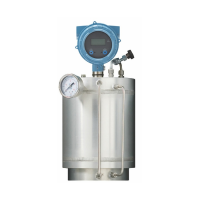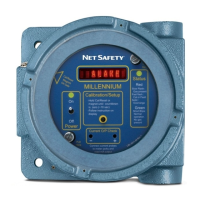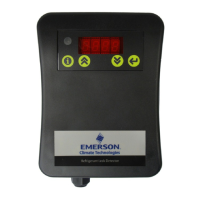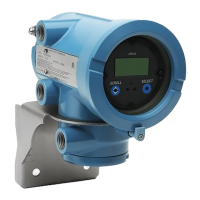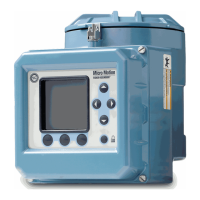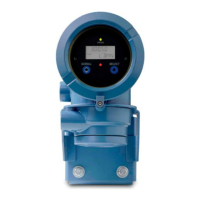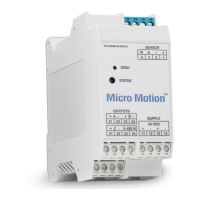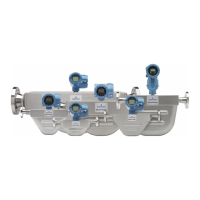54 Micro Motion
®
Model D and DT Sensors Instruction Manual
Troubleshooting continued
Often, this occurs because fluid is flowing downward through a sensor
installed in a vertical pipeline. (When a sensor is mounted this way, it is
called the flag-mount orientation).
To help eliminate cascading, fluids should flow upward through a flag-
mounted sensor. Mounting the sensor in the preferred orientation often
reduces cascading. (See Orientation, page 13.) Increasing back
pressure downstream from the sensor can also reduce or eliminate
cascading.
High points in the system. When measuring liquids, entrained air
(pockets of non-condensable gas) can collect in high points of a fluid
system. If the fluid velocity is low, and/or the high points are very high
relative to the system, entrained air pockets can grow and persist. If the
air pocket releases and passes through the sensor, measurement error
could occur. One possible solution is to install vent valves or air
eliminators at a high point in the system, upstream from the sensor. Use
your common plant practices if you choose to install vent valves or air
eliminators.
Low points in the system. When measuring gases, liquid condensate
can collect in low points of a fluid system. If the fluid velocity is low,
and/or the low points are very low relative to the system, condensates
can accumulate and persist. If the liquid passes through the sensor,
measurement error could occur. One possible solution is to install
condensate valves at a low point in the system, upstream from the
sensor. Use your common plant practices if you choose to install
condensate valves.
Checking for plugging or build-up
If the process fluid tends to build up in the piping, the sensor can
become plugged or partially plugged due to build-up of material inside
the sensor flow tubes. To determine whether plugging or build-up has
occurred, check at the transmitter for a high drive gain and high density
reading (see page 50).
• If the drive gain and the density reading are both high, flush or clean
the sensor, then check for an accurate density reading on water (or
some other fluid with a known density). If the density is still wrong,
plugging of the tube is probably not the problem.
• If either the drive gain or the density reading is not high, plugging of the
tube is probably not the problem.
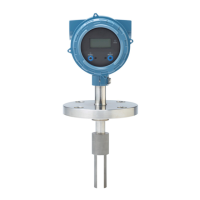
